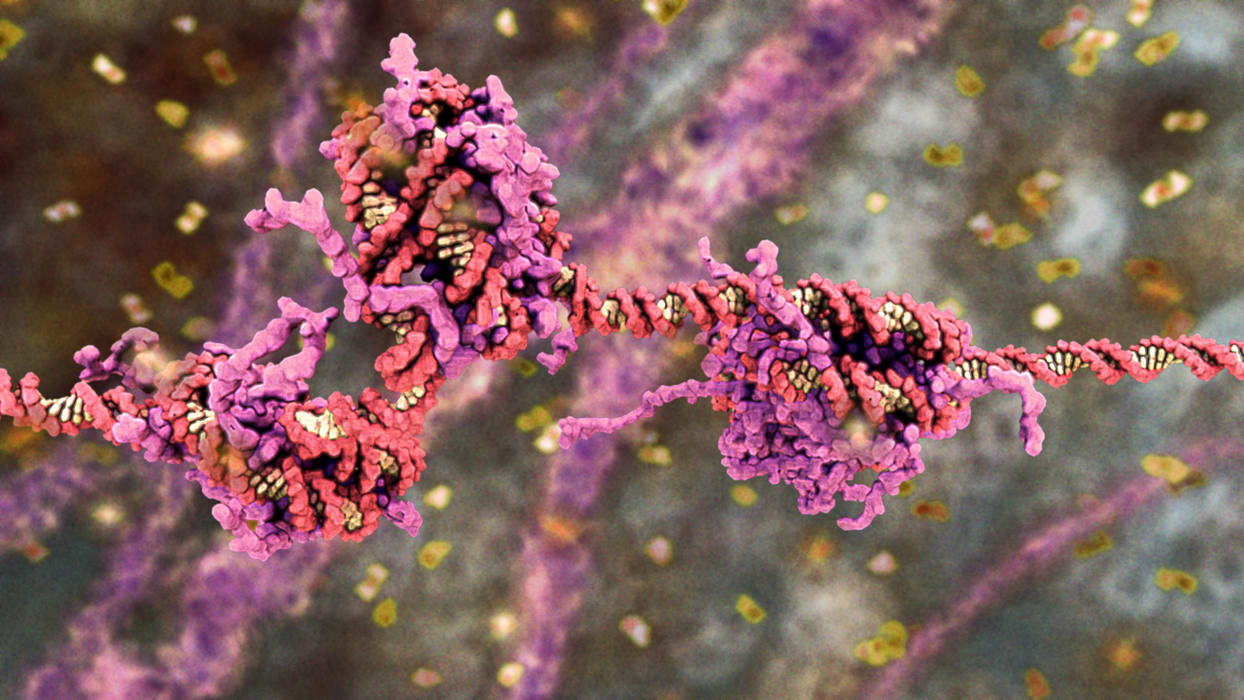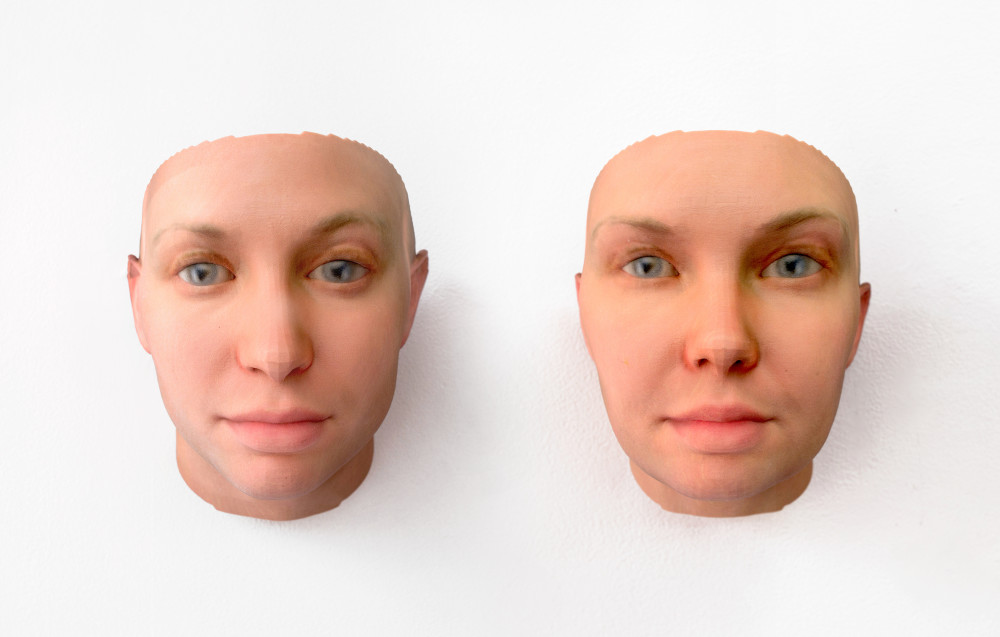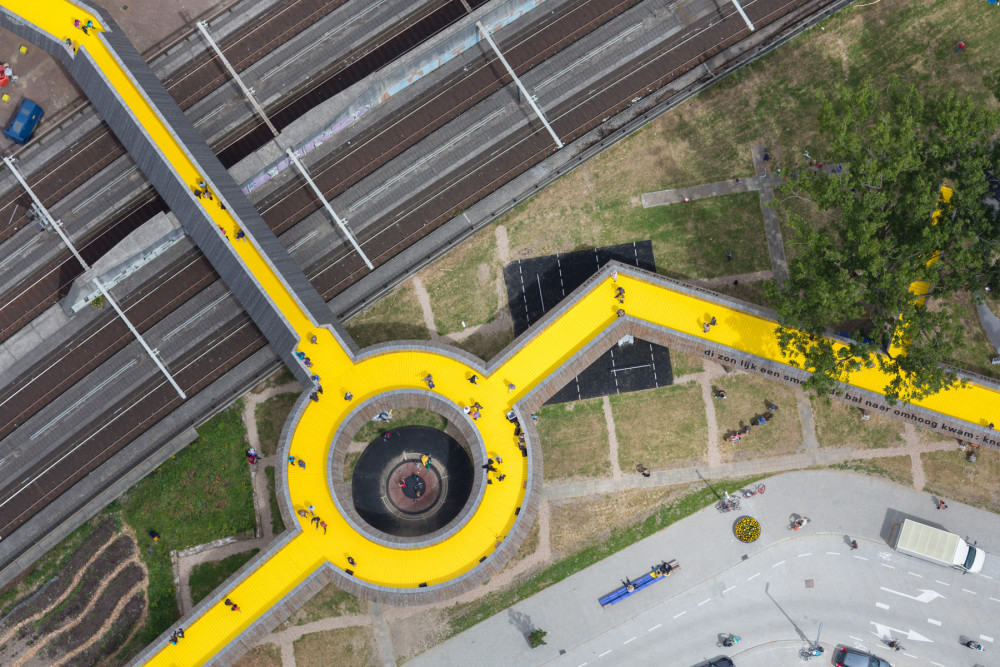The Future Starts Here – 80 projects shaping the world of tomorrow

The exhibition The Future Starts Here aims to shine a light on the power of design in shaping the world of tomorrow. It shows innovative technologies and how they soon will come to affect our lives. A global seed bank to prevent loss of plant species in the event of a crisis, the dream of eternal life through cryonic technology, electric muscles for the elderly, a space factory, a bridge crowdfunded by citizens – this exhibition brings together more than 80 objects either newly released or in development that suggest where society might be headed. Although some may seem straight out of science fiction, they are all real, produced by research labs, universities, designers’ studios, governments and corporations.
March 21st – Aug 4th 2019.
Press Launch March 19th. 10.00–11.00 am.
RSVP: maria.ostman@arkdes.se
Drawing upon international research, and working closely with practitioners and advisors, the exhibition will seek to represent this new picture of an advancing future. Guided by ethical and speculative questions, we invite you to consider what impact these objects might have on your body, your home, your work, your planet – ultimately your life and death. How could they affect the way you live, learn and even love?
Director of ArkDes Kieran Long was one of the initiators of this exhibition, which is curated by Rory Hyde and Mariana Pestana, and organised by the Victoria and Albert Museum, London.
“The exhibition aims to shine a light on the power of design in shaping the world of tomorrow. It shows innovative techniques and how they soon will come to affect our lives. No single creative field discipline will be able to shape the cities of tomorrow alone. ArkDes aims to visualize what happens in our public space when multiple creative practices collectively shape our surroundings”, says Kieran Long, director of ArkDes.
Technological developments effect change at different scales and the exhibition will be arranged around four main themes that increase in scale:
Self, Public, Planet, Afterlife
Act 1: Self.
What makes us human?
Our bodies have become sites of design. We can edit the strands of DNA that make up our genetic code, and have invented implants and devices that enhance our ‘natural’ capabilities. The field of design has expanded to include the monitoring, augmentation and alteration of our selves.
We are all connected but do we feel lonely?
Our homes are gradually filling with smart machines that manage our lives. These appliances are becoming interactive and intelligent. They have the capacity to learn our preferences and habits – what time we get home, our taste in music or what we like for dinner – and this knowledge can easily feel like affection.
Projects in this section:
Radical Love. Heather Dewey-Hagborg, 2016.
Incarcerated for disclosing classified information to WikiLeaks, Chelsea Manning could not be photographed while in prison. The full-colour, life-sized, 3D-printed portraits were generated from analysis of her DNA, extracted from cheek swabs and hair clippings, through a process called phenotyping. Until her release in 2017, this was the only public portrait of Chelsea.
Photo: Radical Love, DNA portrait of Chelsea Manning, by Heather Dewey-Hagborg (c) courtesy of Heather Dewey-Hagborg and Fridman Gallery, New York City.
A home DNA lab. Bento Lab Bento Bio, 2016.
This portable kit allows anyone to experiment with simple DNA analysis without expensive software or specialist knowledge. With this DNA kit, you can test yourself for lactose intolerance or identify genetically modified organisms in your food.
Electric muscles for the elderly. Powered Clothing, Seismic, designed by Yves Béhar, 2017.
Exosuits are designed to enhance the capabilities of the human body. Made from a lightweight and flexible material, this example is marketed towards an older audience.
A cute robotic seal to comfort and calm. PARO Therapeutic Robot, PARO Robots, 2014.
This cuddly robotic baby seal is designed to comfort the elderly, particularly those with dementia. It responds when people interact with it, moving its tail, opening its eyes or making noises.
Alone together. Technology in Bed, Hanif Shoaei, 2014.
The photographer Hanif Shoaei has created a series of images of individuals and couples engaging with their smartphones at night. One photograph shows a couple absorbed by their smartphone screens, disengaged and facing away from each other. The image suggests isolation in a place that should be intimate – a situation probably familiar to many of us.
Act 2: Public.
Does democracy still work?
The objects here document the limits of democracy today, but also present alternative systems designed to rebuild trust or divert power to citizens. They include new forms of collective decision-making, digital ways of giving a voice to public opinion and the application of new technologies to trans-national challenges. Will the future be defined by top-down governmental systems, or will it be shaped by the rising force of bottom-up, citizen-led organisations?
Are cities for everyone?
The way cities are designed and built is undergoing a radical transformation. Citizens, communities and collectives are harnessing new tools to raise funds and coordinate efforts in order to shape their cities. The objects here document the limits of democracy today, but also present alternative systems designed to rebuild trust or divert power to citizens.
Projects in this section:
Luchtsingel. A crowdfunded bridge, Zones Urbaines Sensibles (ZUS), 2011–2015 .
Luchtsingel is a pedestrian bridge connecting Rotterdam’s declining Central District to the city’s north. This walkway, which was crowdfunded by citizens, stretches over 400 meters and incorporates a public park and a rooftop garden. Each of the bridge’s timber panels is inscribed with the names of each citizen donor. An important community initiative, the project raises questions about government accountability in delivering vital public infrastructure.
Photo: Luchtsingel, pedestrian bridge crowdfunded by citizens, ZUS, Rotterdam. Photography Ossip van Duivenbode, 2011 – 2015 © ZUS.
A knitting pattern that defied a president. Pussy Power Hat, Pussyhat Project, 2017.
In January 2017, over 500,000 people took part in the Women’s March on Washington to protest the inauguration of US President Donald Trump. Before the event, participants were encouraged to download a basic open-source knitting pattern to create their own pink pussyhat to wear. The pussyhat, a response to Trump’s boast of grabbing women ‘by the pussy’, became an internationally recognised symbol of female solidarity against the President’s administration.
Act 3. Planet.
Should the planet be a design project?
Years of burning fossil fuels, polluting the oceans and pushing plant and animal species to the brink of extinction have altered our planet to the extent that some scientists have declared a new geological epoch. Now that we know our behaviour has unintentionally designed the Earth, can we use technology to reverse the effects? Some designers are working on possible solutions to clean, repair or give back to the planet.
If Mars is the answer what is the question?
New technologies and advances in computing have radically reduced the cost of space flight, allowing private companies, academic institutions and even wealthy individuals to enter space. Others are looking beyond to discover new planets as an alternative supply of resources, or even as a place to live.
Projects in this section:
A space factory. 3D Printing in Zero-G Technology Demonstration, Made In Space, 2014.
These objects were made with the world’s first zero-gravity 3D printer, which was used on board the International Space Station in 2014. This technology is the first step toward a future of factories in orbit that could potentially be used to build satellites, spacecraft or even interplanetary habitats. A selection of these objects have been 3D-printed and will be on show.
Visualising the global effects of aerosol emissions. Climate Crimes, Adrian Lahoud, 2015–18.
Drawing on data compiled by NASA, this installation visualises the flow of aerosol emissions from Europe and North America and its subsequent impact on rainfall in the Sahel region of Africa.
Shooting stars on demand. Sky Canvas, ALE Co., Ltd., Lena Okajima, 2015.
Japanese start-up company ALE & Co (Astro Live Experiences), led by astronomer and entrepreneur Lena Okajima, are behind Sky Canvas, the world’s first artificial shooting star project.
A sandbox for exploring how we might terraform planets. Terraform Table, Tellart, 2017.
This interactive sandpit allows visitors to play with topography.
Act 4. Afterlife.
Who wants to live forever?
Advances in biotechnology and artificial intelligence now promise to radically extend our lifespans. The idea of reawakening after death or uploading one’s mind onto a computer used to be the stuff of fiction, but pioneering research in this field is currently in progress. Experimental and extremely expensive, the potential for life extension also opens up ethical and financial issues. The question might not be who wants to live forever, but rather, who can afford to?
Projects in this section:
Cryonics Alert Bracelet. Alcor Life Extension Foundation, 2014.
Around 2,000 people worldwide have signed up for life extension services, with a view to being brought back to life in the future when technology is advanced enough. Participants in the programme will go through the process of “cryopreservation” at the time of their legal death, and their bodies will be stored in liquid nitrogen at -196°C. A Cryonics Alert Bracelet is provided to anyone that signs up to the Alcor Life Extension Foundation for these services, and an example will be on loan for the exhibition from its owner.
Architectural model of the Svalbard Global Seed Vault. Svalbard Global Seed Vault, 2008.
Deep in an icy mountain in Svalbard, a remote archipelago off the coast of Norway, the Global Seed Vault preserves the world’s seeds in almost a million packets. These seeds, which represent the planet’s largest collection of crop diversity, are vital for humanity’s survival if faced with a global disaster, arguably ensuring our future food supply.
Engineering at Home. Sara Hendren and Caitrin Lynch, 2016.
71-year-old Cindy lost the full use of her limbs following complications from a severe heart attack. While waiting for her new robotic prosthetic, Cindy improvised ‘object hacks’ to help her with everyday tasks that she now found impossible.
Curated by Rory Hyde and Mariana Pestana.
Conceived by Rory Hyde, Kieran Long and Mariana Pestana.
Exhibition organised by V&A, London.
ABOUT ARKDES, THE SWEDISH CENTRE FOR ARCHITECTURE AND DESIGN
ArkDes is Sweden’s national centre for architecture and design. It is a museum, a study centre and an arena for debate and discussion about the future of architecture, design and citizenship.
Our mission is to increase knowledge of and cultivate debate about how architecture and design affect our lives as citizens.Sweden is in the middle of an unprecedented building boom, one that will define its towns and cities for decades to come. The work of ArkDes aims to influence this change through debate, exhibitions, campaigns and research relating to Swedish and international architecture and design. We aim to put the citizens at the centre of the debate and look at the world through their eyes.
About ArkDes
ArkDes is Sweden’s national centre for architecture and design. It is a museum, a study centre and an arena for debate and discussion about the future of architecture, design and citizenship.


